The Manga that Captures Mega Man's Imagination - Mega Man Monthly
Mega Man Monthlymix
As you may glean from the monthly articles, I think Mega Man is pretty special. If you disagree, I am unlikely to convince you on my own. The best way to understand something is to engage with it yourself. To know Mega Man, you must play Mega Man games. Time stops for no one, however. If you simply play the original Mega Man games for the first time right now, you are unlikely to walk away with the same impressions I did. It can be difficult to remove yourself from modern day context and accept older games as they are. Enjoying Mega Man requires some imagination.
Sometimes the right combinations of thoughts and feelings can convey the context others need to leap over any hurdles laid out by the passage of time. From there, newcomers can freely discover what they find special about Mega Man for themselves. Even people who already love something can stumble upon new ways to appreciate it through this process – that’s largely what I aim to do with the things I write.
Hitoshi Ariga’s artwork stands as perhaps the single best example of converting one’s view of Mega Man into an artform. Mr. Ariga gets Mega Man; his obvious love for the character shines through every time he draws something for the series. Throughout the years, he’s contributed boss designs and a treasure trove of promotional material for the series. While all of that is impressive, his manga leaves a defining mark on the way I and many others (including Mega Man’s developers) view the character.
Manga fits Mega Man better than it may seem at first glance. This is a medium that excels at telling stories. Although Mega Man may conceptually be inspired by the works of manga authors like Osamu Tezuka, his greatest strengths arguably lie everywhere except the storytelling. The early games especially say very little about what’s actually going on. However, that lack of detail leaves room for opportunity. In the right hands, the underdeveloped becomes a playground for imagination, and you don’t even need to be a professional artist to have fun with it.
The imagination that Mega Man inspires plays a key role in his longevity. Imagination lies at the heart of everything Mega Man does, from his ability to copy weapons to his many different incarnations. Mega Man’s inherent potential for change provides endless possibilities. His shifting nature not only helped him stand out from his contemporaries, but also take advantage of the limited technology of the era.
Long ago, let’s say at least a thousand years because I’m no good at counting, video games often lacked definition. You could play an entire game multiple times over and still not know anything concrete about it. What kind of world the game took place in and any details about the characters residing within it remained ambiguously represented by pixels and beeps. Sometimes, outside sources like instruction manuals, guides, or magazines filled in the gaps. Most of the time, your imagination needed to do the heavy lifting. Mega Man’s run of games on the NES were no exception.
While you can chalk the ambiguity up to a fault of dated technology, I actually enjoy the room for interpretation that cruder technology creates. Not to get too pretentious, but it’s similar to appreciating a painting, or at least that one urinal with a signature on it. The pixels on screen and the beeps coming out of the speakers transcend past their limitations to paint a picture in your head. Your thoughts and feelings while absorbing a game’s individual elements adapt them into a version of the game unique to yourself.
No piece of Mega Man history demonstrates that idea better than Mr. Ariga’s manga interpretations of Mega Man. Beginning in the 1990s, he authored a remixed interpretation of Mega Man’s world that you can find published in English (although currently out of print) as “Mega Man Megamix” and “Mega Man Gigamix.” These six manga volumes tell an anthology of stories that, while not always presented in chronological order, tie into a single alternative continuity. Some stories directly adapt the plot of the games, while others fill in the blanks between them with completely original stories.
Regardless of how closely Mr. Ariga’s manga sticks to the source material, he pulls it off in a way that is distinct to his vision of the series. Megamix and Gigamix essentially act as windows into someone else’s view of those ambiguous 8-bit worlds. Mr. Ariga depicts the characters in a far more detailed way, from their designs to their personalities. The consequences of the stories are given context and gravity that the games never make apparent. It is visually and narratively a completely different experience from playing the games.
Yet at the same time, the true power of Mr. Ariga’s vision of Mega Man is that it isn’t really a completely different experience. His version brings Mega Man’s world to life in a way that feels accurate to what’s in the games. In the same way that multiple people can stare at the same painting and come up with different interpretations, there can also be plenty of overlap between them. After all, the developers of the games obviously had their own vision of how things should be and they left plenty of details for players to pick up on.
The way that Mr. Ariga portrays Mega Man himself demonstrates the most clear example. Anyone who clears the first two games will inevitably get the same impression of Mega Man: he may look cute, but there’s a sadness to him. Mega Man’s lonely walks home, further characterized by the music, are simultaneously triumphant and somber. These scenes speak to the heart of a conflicted hero. It’s like they’re saying “yeah, Mega Man saved the day, but at what cost?” Mr. Ariga’s Mega Man carries that constant conflict within him – he’ll shift from cutesy hero to reluctant warrior whenever the circumstance calls for it.
While Mega Man closely reflects his original counterpart, the bosses take their upfront traits and carry them to their logical conclusions. Despite his actual size in-game, Guts Man looks like he’s supposed to be a big guy, so the exaggerated version in Megamix naturally evolves the concept. When Cut Man shows up acting like a cocky goofball, you believe it. He just has that look about him, you know?
My personal favorites are the “cool” bosses. These designs mark the most dramatic departures from the originals to better fit their role in the story. Quick Man becomes an intimidatingly large, powerful figure who is so awesome that he tamed the Mecha Dragon from Mega Man 2 and made it into his pet. Skull Man’s anatomy twists in an exaggerated fashion that removes him from his more human-like counterparts. Shadow Man more thoroughly reflects his ninja stylings and carries himself with an aloofness that works just as well in making him look cool as it does as a tool for comedy.
Yet just like with everything else, these bolder choices have roots in the games. Mr. Ariga’s Quick Man formed from the sense he got while playing Mega Man 2 that Quick Man was an important, rival-like character. After all, his boomerang horns extended far beyond his portrait in the boss select screen, something no other character dared to do. Similarly, Mr. Ariga’s sad, lanky version of Skull Man resulted from Skull Man’s unusual behavior during the fight with him in Mega Man 4. In the game, Skull Man won’t make a move unless you do; until then, he stands in quiet contemplation.
Details matter in Megamix and Gigamix, which clearly shows in the stories that Mr. Ariga tells. Rather than retelling each Mega Man game in a straightforward manner, his manga often focuses on relatively untouched parts of Mega Man history. Little details from the games will spur on entirely original stories, or more obscure games like Battle & Chase will get full adaptations. Although not an official part of the Megamix storyline, Mr. Ariga adapts Mega Man Soccer in just about the only way you could do the premise justice: as a series of gag strips. Gigamix makes the grandest connections of all, combining the scattershot premises of Mega Man 3, 8, and the Gameboy version of 5 to tell a truly epic tale that makes perfect sense yet the games never had the foresight to connect.
No matter how grand the storytelling gets, however, it never ignores Mega Man’s mixture of lightheartedness and drama. As the Mega Man series marched on, it shifted away from tragedy and into a decidedly more upbeat tone. The plots got wackier as the angst took a backseat. Mega Man designs lend themselves to both moods, so it works out. The manga follows suit with serious renditions of the first two games, while everything beyond that mixes drama and comedy in relatively equal measure.
The ability for Mega Man to depict both of those extremes speaks to the innate human quality to the series that underpins its appeal. Despite their robotic nature, despite the simple designs, and despite the crude technology powering them, Mega Man games are all about the soul behind technology. Look at the characters. Listen to the music. Absorb all of the little details. It’s so obvious that the robots in Mega Man have souls! It’s obvious that the games themselves have souls! The hard work of the passionate people behind these artificial creations could result in nothing less.
To believe that, of course, you need some imagination. Games can be enjoyed for a variety of reasons, but it always surprises me how rarely people talk about the enjoyment that comes from imagination. Video games often grow to be more than the sum of their parts. Graphics, gameplay, and music combine to create a greater entity fueled by your imagination. The thoughts and feelings you have while experiencing the game matters just as much as the literal events on-screen.
Mr. Ariga’s manga captures the full range of emotions you can experience while playing Mega Man. Megamix and Gigamix are the truest, most effective adaptations of the imagination that Mega Man inspires. They communicate exactly what makes Mega Man special beyond its individual elements. If you don’t “get” Mega Man, reading Mr. Ariga’s work may just be the introduction you need to understand.
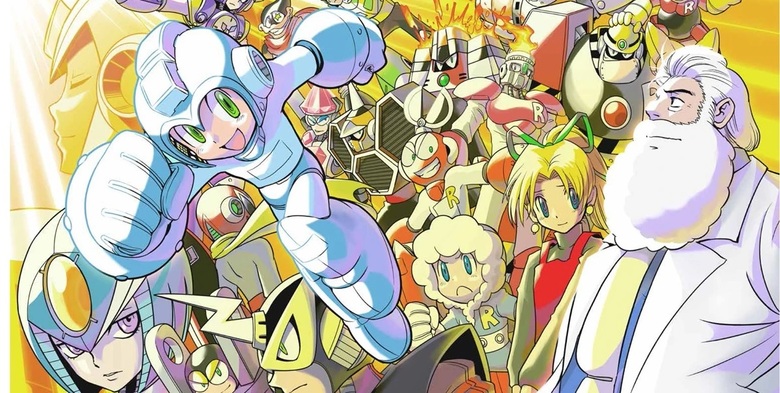
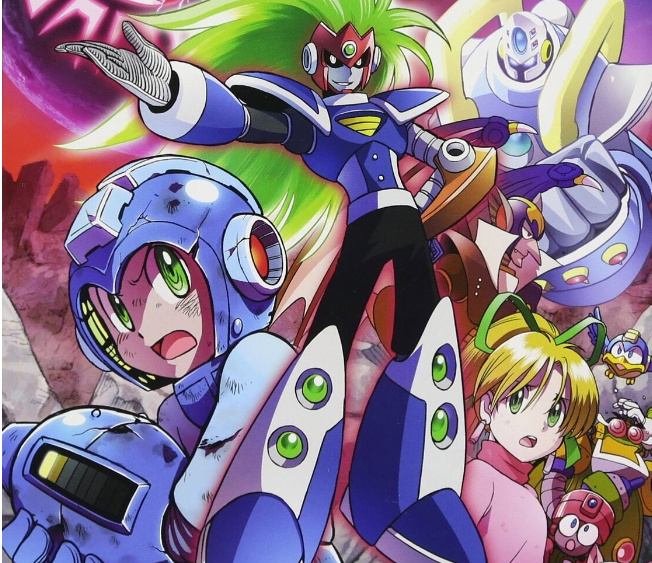
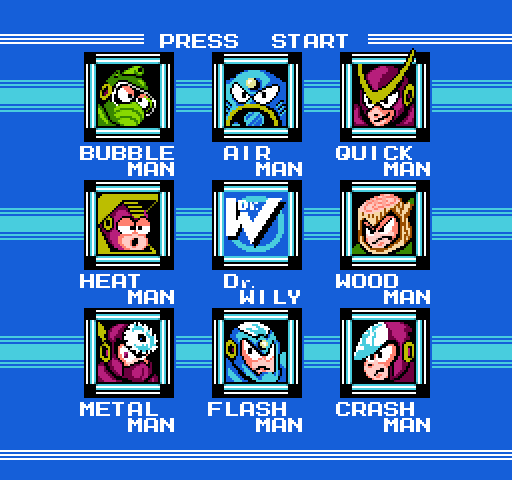

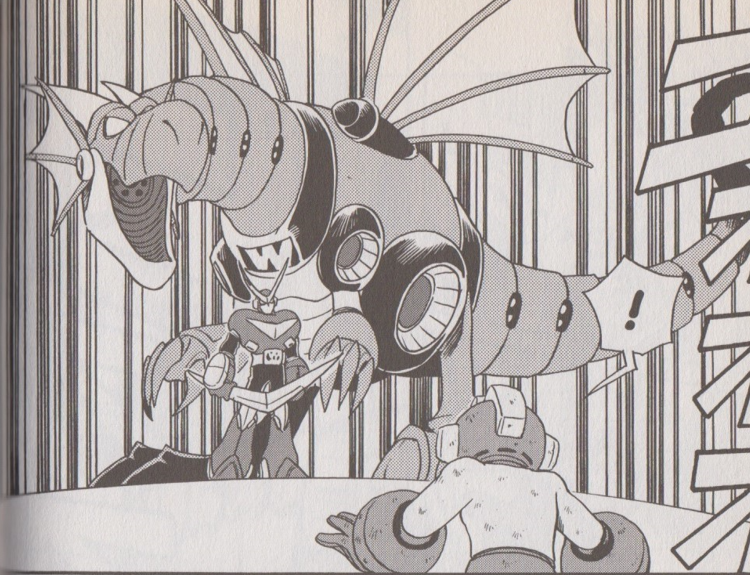
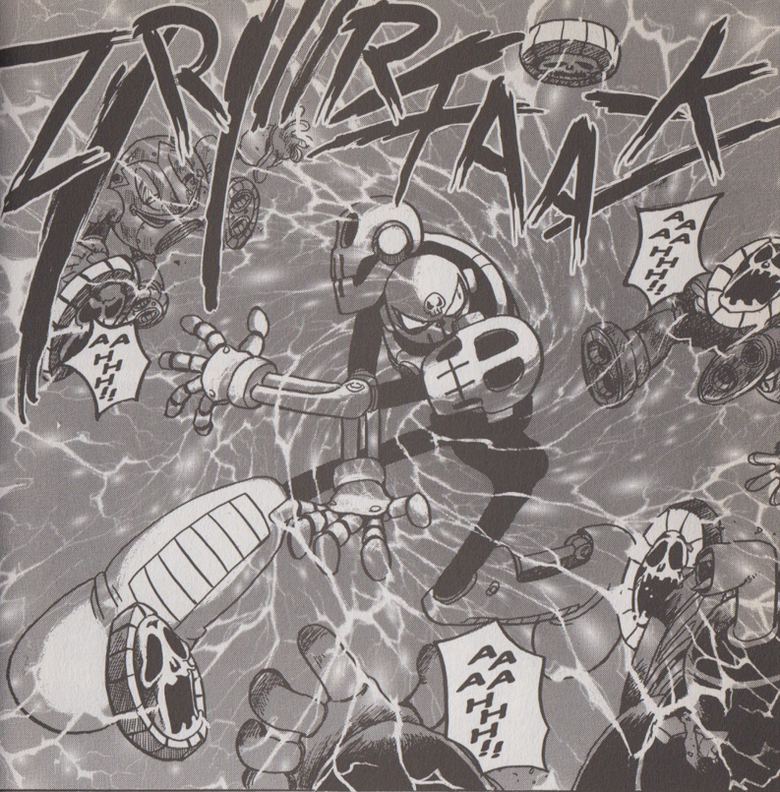
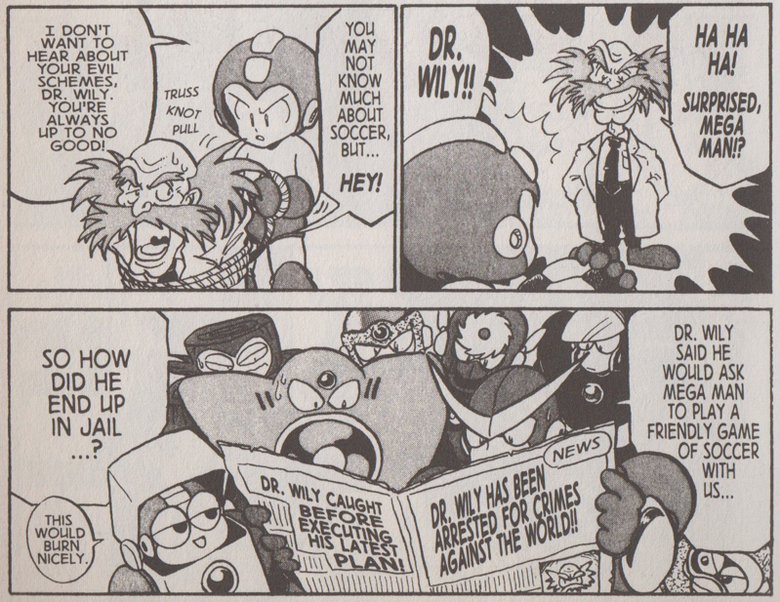
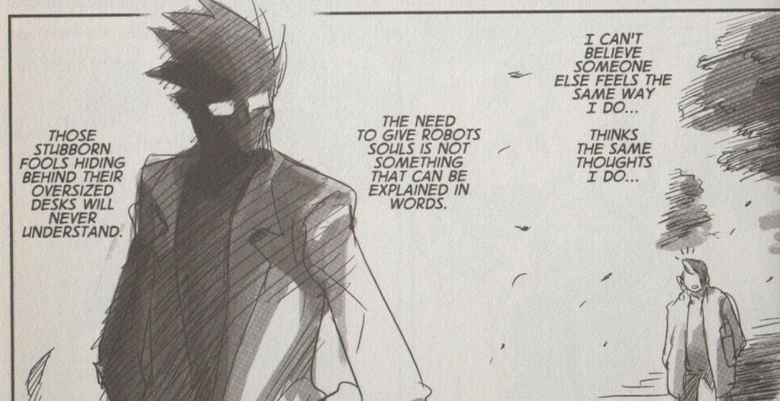
Comments (0)